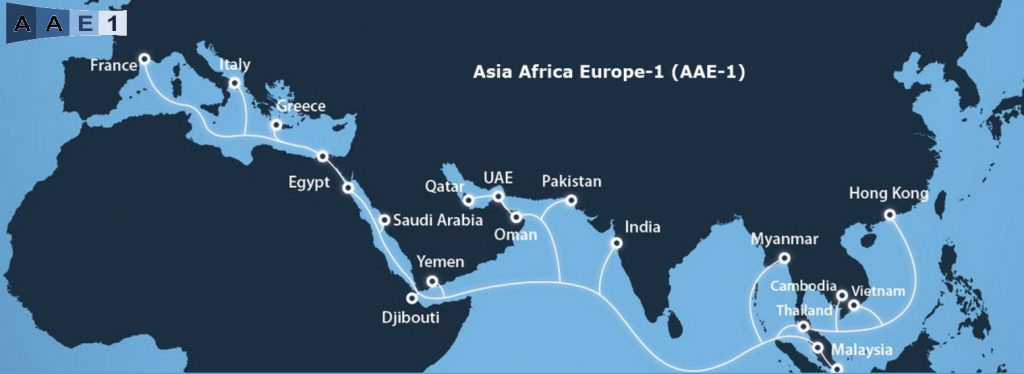
Reliance Jio has launched Asia-Africa-Europe (AAE-1) submarine cable system, the longest 100Gbps technology based submarine system that will stretch over 25,000 km from Marseille, France to Hong Kong, with 21 cable landings across Asia and Europe. “This large scale project is the combined work of leading telecom service providers from Europe, the Middle East, and Asia,” said the company.

Highlights of AAE-1
- 25,000km consortium cable system connecting South East Asia to Europe via Egypt is the largest submarine cable to be constructed in almost 15 years.
- Connects Hong Kong, Vietnam, Cambodia, Thailand, with Malaysia and Singapore, then onwards to Myanmar, India, Pakistan, Oman, UAE, Qatar, Yemen, Djibouti, Saudi Arabia, Egypt, Greece, Italy and France.
- Deploys state-of-the-art 100Gbps transmission technology, with a minimum design capacity of 40 Tbps.
- Has diversified Points of Presence (PoP) in Asia (Hong Kong and Singapore) and three onward connectivity options in Europe (via France, Italy and Greece) to provide the flexibility and diversity for carriers and their customers.
- Will pass through the critical hubs, serving the increasing demand for video centric data bandwidth supporting all types of communications, applications, and content within India and beyond.
- Links seamlessly with other cable systems and fiber networks to deliver direct access to all global markets.
- Provides one of the lowest latency routes between Hong Kong, India, Middle East and Europe with the fewest hops.
Jio provides the Network Operations & Management for AAE-1 Cable System. The AAE-1 NOC, managed by Jio, leverages facility in Navi Mumbai along-with its advanced tools and automation.
Mathew Oommen, President-Jio, said:
The new terabit capacity and 100Gbps direct connectivity to global content hubs and interconnection points ensure that Jio will continue to offer its customers the most exceptional high speed internet and digital service experience.We are excited to participate in the launch and deliver the cable landing in Mumbai at the time when India’s data traffic continues its accelerated data consumption and growth.
